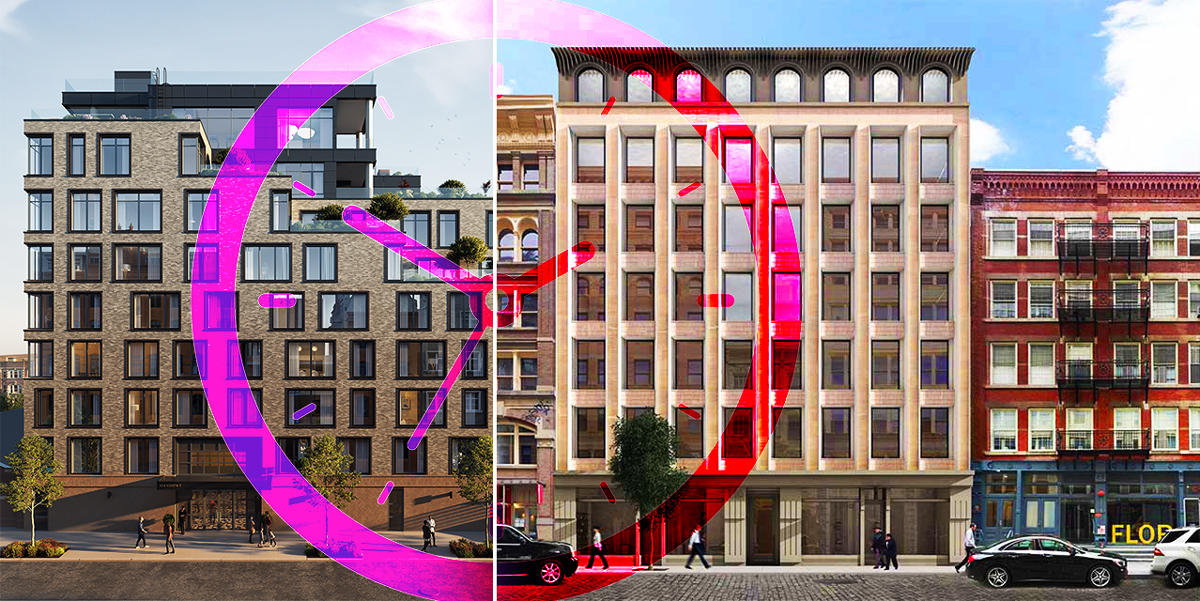Trending
The waiting game: Why some developers are launching resi sales later
A slowing luxury market is playing a part

While developers have more marketing options today — like immersing buyers into virtual, three-dimensional versions of their future homes — some are sticking with more traditional tactics.
Just a few months before completing construction at 150 Wooster Street, KUB Capital launched sales at the Soho condo building. The developer wanted potential buyers to actually view the units, rather than rely on renderings or floor plans to inform their decisions.
“Our feeling was that the location and real estate spoke for itself,” KUB principal Shawn Katz said. “I certainly feel that the ability for buyers to step in and actually experience the finished building and units was a big factor of our success.”
KUB began selling apartments — with listing prices between $12 million and $35 million — in October, and then largely completed construction in late December. All six units sold by mid-May, according to StreetEasy.
By waiting until that point, developers can show off tangible living spaces, as well as the building’s amenities. And in a softening luxury market, a corporeal product could give a residential project an edge over one that only offers a rendering.
“In today’s market, buyers really want to see progress in construction,” said Douglas Elliman’s Tamir Shemesh. “They want to feel and touch the construction.”
Shemesh will be handling sales at Adam America Real Estate and Naveh Shuster Group’s 308 North Seventh Street in Williamsburg. His team plans to launch sales in the 45-unit building once a model unit is ready, which Shemesh expects to be around Labor Day. He noted that it still makes sense for developers building larger projects to rent out spaces offsite for model units or sell off renderings, since they have a longer construction timeline.
“There will always be buyers who will buy off offering plans,” he said. “It really depends on the project.”
Such was from 2012 to 2014, when developers started marketing as soon as an offering plan was declared effective, according to Jonathan Miller, CEO of appraisal firm Miller Samuel.
“The tighter the market, the earlier the sales effort begins,” he said. “As you move toward the end of a cycle, and you have more competition, and buyers want to see the tangible asset, you are going to see this type of marketing.”
Still, industry professionals who spoke to The Real Deal said much more is at play when choosing a sales strategy. And part of that is contending with buyer expectations.
Compass Chief Evangelist Leonard Steinberg said that consumers are “spoiled” in that they expect to peruse sophisticated sales galleries. If a project doesn’t have the budget to build a $5 million-plus gallery offsite, waiting until an onsite unit is ready might be the next best option.
“We’ve entered a new phase of the market, and there’s definitely a new reality now where you have buyers who have elevated expectations,” he said. “How do you compete with $5 million worth of a Broadway production of exquisiteness?”
Though timelines vary on a project-by-project basis, pre-construction sales efforts traditionally start when the building goes vertical, meaning as the concrete shell of a building is rising, Steinberg said.
Extell Development Company, for its part, plans to begin sales at 1010 Park Avenue in the fall, when construction at the building is complete. Donna Gargano, senior vice president of development at the firm, said it was a logical strategy for the project — it’s relatively small, with 11 duplex, full-floor units and three floors worth of amenities. Potential buyers will be able to view two different model units and the amenities floors, which include a pool, gym and a playroom.
“We expect a sophisticated buyer, and we wanted to handle sales on a one-on-one basis,” she said.
However, waiting until construction is further along can be a gamble. Donna Olshan, head of her eponymous boutique residential firm Olshan Realty, noted that the market can shift during the years-long construction process, as can tastes.
“A lot of buildings start so far back that the design and the finishes were picked three, four, five, six years ago,” she said. “By the time the model is installed, it’s not that inspiring.”
Stephen Kliegerman, president of Terra Development Marketing, said that in particularly active years in New York City — think pre-2008 and then between 2011 and 2014 — it wasn’t unusual for buildings to launch two years prior to receiving a temporary certificate of occupancy (TCO). That lead time, especially for buyers in the $1 million to $2 million range, is trending closer to one year, he said.
“We have been advising our clients to wait a little bit closer to projected TCO or potential occupancy to launch sales,” he said, noting that middle-market buyers often have shorter-term goals and aren’t keen on making major financial decisions so far in advance.
But ultimately, Olshan said, sale success is dependent on the market.
“Everything in this life is timing. It doesn’t matter how good the model is if the pricing isn’t right and the timing isn’t with you,” she said. “I don’t care what any developer does. You can’t out-trick the market.”




